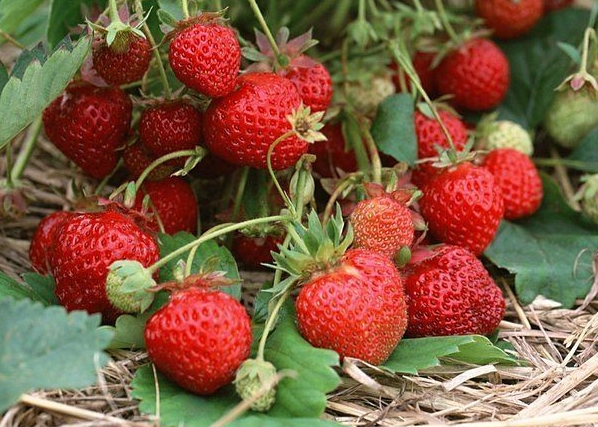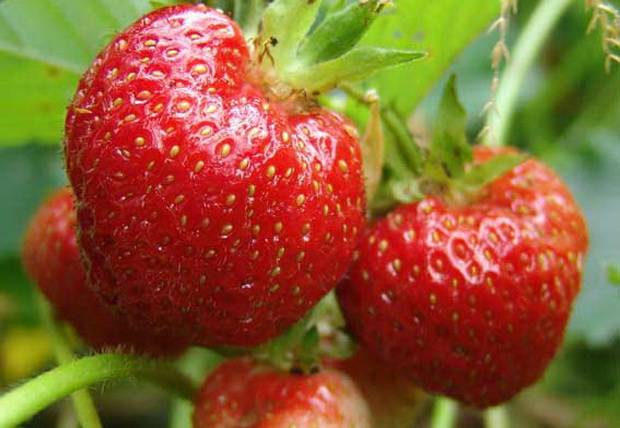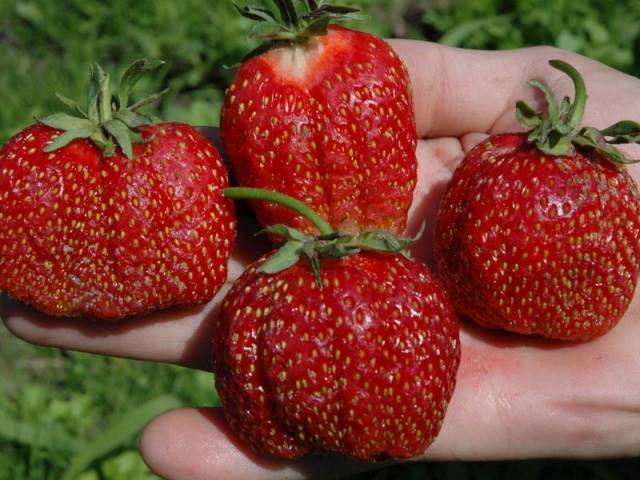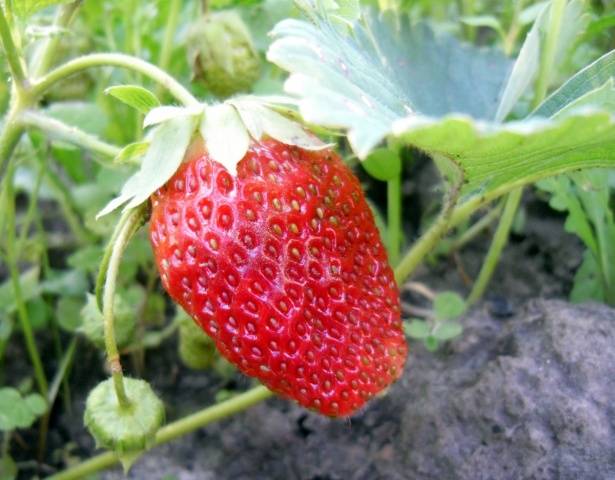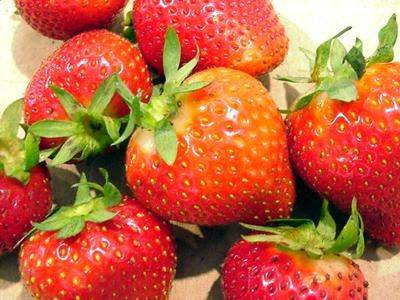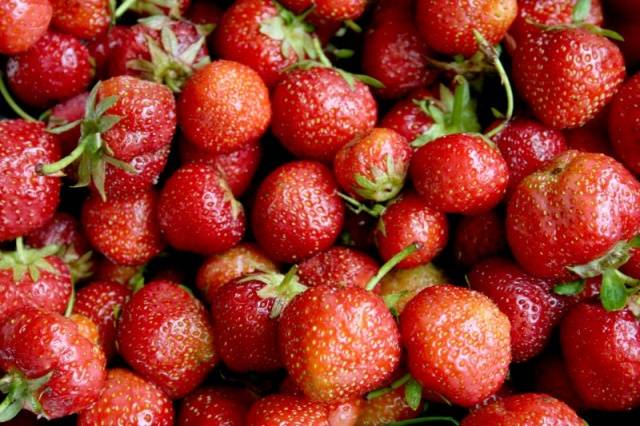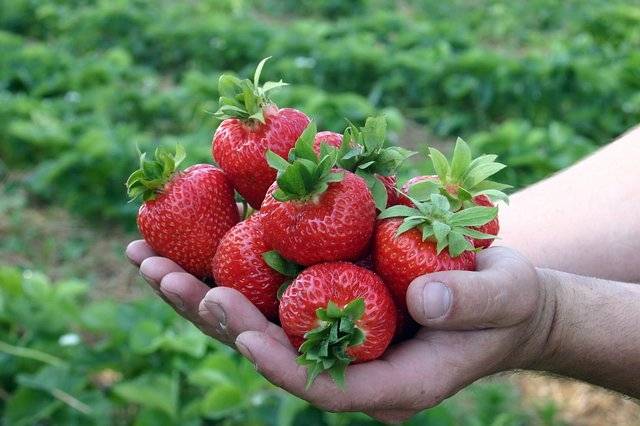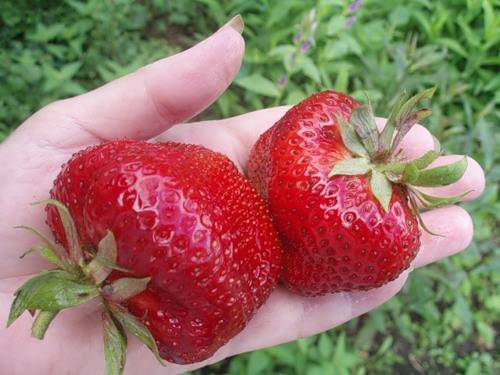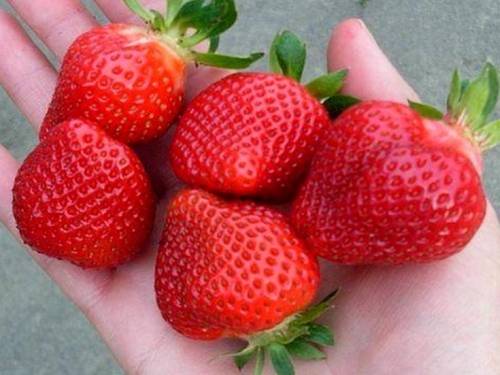Content
Strawberries in the garden are a welcome treat for adults and children. It is grown by many farmers in the hope of getting a huge amount of delicious, aromatic berries. But unfortunately, the work of gardeners will not always be crowned with success, because even with all the rules for caring for plants, you can get a relatively meager harvest. So, often the essence of the problem lies in the wrong choice strawberry varieties... The problem is especially relevant for regions with a difficult climate, for example, Siberia. Having decided to grow berries in this part of Russia, you need to pay attention to special zoned strawberry varieties. They are distinguished by high winter hardiness, adaptability to short daylight hours, and disease resistance. The most popular strawberry varieties for Siberia are given below in the article. After evaluating their description and photos, you can choose the best variety for yourself, which will certainly delight you with a good harvest.
How to choose the right strawberry variety for Siberian conditions
Before you buy seeds or seedlings of strawberries, you need to decide how long the berry ripens you want to see on your site and whether it will be repair strawberry... It is worth noting that the remontant plant bears fruit twice a season. You can also find varieties of continuous fruiting strawberries that will delight you with berries regularly at intervals of 6 weeks throughout the warm period. Plants adapted for repeated fruiting require special care. In Siberia, they are most profitable to grow in protected conditions that will extend the growing season and increase crop yields.
According to the ripening period, all types of strawberries are divided into early, mid-and late-ripening. Early varieties of berries ripen at the end of May. For late-ripening berries, the ripening period occurs in July. Berries of remontant varieties and varieties of continuous fruiting can delight with their taste from mid-spring to the onset of frost.
Regionalized varieties
Among all varieties of strawberries, several zoned for Siberia can be distinguished. They are bred by domestic and foreign breeders and have all the necessary qualities. Among these varieties, the most popular among gardeners are:
Fairy
This variety of garden strawberries (strawberries), medium-long term fruit ripening, bred specifically for the Siberian region. It is extremely resistant to diseases and pests. Even the most severe winter frosts in the presence of snow cover are not able to damage the bushes of this plant.
Fairy berries have excellent taste and aroma. Their mass is quite large and can reach 40 g, the shape is truncated-conical. The main advantage of the Fairy strawberry is its high yield, which can reach 1.5 kg from each plant.
Bushes of the "Fairy" variety are erect, compact enough, slightly spreading. The peduncles of the plant are stable, low. They do not require any special care, but at the same time they respond gratefully to fertilization.
Festivalnaya
Festivalnaya strawberries can rightfully be called one of the best. Its main advantage is tasty and rather large (30 g) red berries with a pleasant fresh aroma. Their shape is rounded-conical, sometimes flattened.Characteristic grooves can be observed on the surface of the berries. The fruits ripen in July for a long period of time. The high yield allows you to feast on berries in season and harvest the product for the winter. Due to their excellent keeping quality and transportability, strawberries can be stored fresh for 4-5 days without loss of quality, as well as the product can be sold.
Festivalnaya strawberry has a high winter hardiness. She is not afraid of severe Siberian frosts. Lush bushes of this variety are highly leafy, forming a powerful rosette. The plant is well adapted to regeneration. After pruning or mechanical damage, the leaves grow back quickly, restoring the life cycle of the strawberry.
Among the disadvantages of the variety, it is necessary to note the low resistance to some diseases, in particular, verticillary wilting and powdery mildew.
Mascot
The Talisman variety is unique. It was bred in Scotland a long time ago, and 5 years ago, domestic breeders recognized it as suitable for the conditions of Siberia. The variety is highly resistant to freezing and is practically not affected by harmful microflora.
The berries of this strawberry are large enough, round-cylindrical. Their weight is not less than 20 g. Fruit ripening period is of average duration. The peak of fruiting occurs in early July. The yield of the Talisman variety is average, a little over 1 kg / m2.
The peculiarity of the variety is that it is semi-renovated. Berries in the summer season ripen on the bushes last year, and closer to autumn, you can expect fruits on the shoots of the current year. Given the ability of the variety to form a mustache abundantly, we can say that the harvest of the second stream will also please with its quantity and taste. You can increase the yield on young shoots at the end of the season with additional feeding.
Lviv early
This variety has been cultivated for many years by professional farmers and amateur gardeners. It has been tested by time, and, according to experienced farmers, has never failed. It can be grown on absolutely any kind of soil. The plants rooted remarkably and bear fruit every year, showing high yields.
Berries of "Lviv early" strawberries harmoniously combine both sourness and sweetness. The average fruit size is impressive: each berry weighs about 30 g. The variety is characterized by the presence of a neck on the berries, the shape of which is similar to a truncated cone.
Strawberry "Lvivska early" is unpretentious in care, however, experts estimate its winter hardiness as average. In Siberia, it is recommended to cover strawberry plantings with burlap or spruce branches to prevent freezing in winter. Most diseases for the variety do not pose a threat; the only potential pest for plants is the strawberry mite.
Idun
It is quite possible to grow a lot of tasty strawberries in Siberia without much hassle, if you choose the Idun variety for this. This strawberry was bred by Danish breeders specifically for regions with difficult, harsh climatic conditions. The variety is absolutely not whimsical, it can grow and bear fruit on any soil. It is demanding only for abundant watering during flowering and ripening of berries.
"Idun" is early ripening, already at the end of May you can taste its first berries. The size of rounded fruits is medium, their weight varies from 15 to 25 g. The berries are juicy and fragrant, truncated-conical in shape, slightly compressed from the sides. The strawberry pulp is juicy, slightly porous, which does not allow the product to be stored for a long time or to be transported over long distances.
Non-repairing strawberries "Idun" are resistant to many diseases and pests.The only danger for her is gray rot and verticilliosis. The advantage of the variety is the rapid regeneration of greenery after damage and pruning.
Omsk early
A fairly popular variety of garden strawberries, which was bred specifically for the farmers of Siberia. A heavily leafy bush is not afraid of frost and is practically not susceptible to freezing. Diseases and pests are also not scary for "Omsk Early" strawberries.
The berries of this variety are medium-sized, their average weight is slightly more than 10 g. At the same time, the concentration of sugar and vitamin C in the fruits is increased. The taste of this product is remarkable. According to experts, the berry deserves 4.5 points out of 5.
Strawberry bushes are compact, slightly spreading. They form low peduncles with a lot of branching. This allows, with a modest size of berries, to obtain a generally high yield of the crop. So, from every 1 m2 soil, you can collect up to 1.3 kg of berries.
All of the listed strawberry varieties are zoned for Siberia. They also include the varieties "Tanyusha", "Daryonka", "Amulet". They have been grown for many years on industrial plantations and in private farmsteads. Time-tested varieties show their best taste and agrotechnical qualities, thanks to which they are still the best for a region with a harsh climate today.
Repaired varieties for Siberia
All of the above varieties of strawberries, with the exception of "Talisman", are not remontant. It is rational to plant them on open ground, since a single fruiting does not justify the costs of buying and installing a greenhouse or other equipment. Another thing is the varieties of remontant strawberries for Siberia. Their main advantage is their high yield, which is achieved through several stages of fruit ripening. The greenhouse in this case allows you to extend the growing season of the plant and further increase the yield of the crop. In greenhouse conditions, you can pick berries from early spring to late autumn.
Queen Elizabeth II
Among the remontant strawberries, “Queen Elizabeth II” is perfect for Siberian conditions. This remontant variety can be safely called one of the best. It is characterized by a high yield, up to 1.5 kg per bush. The berries of this strawberry are especially large, weighing from 40 to 80 g. Some fruits reach a record weight of 100 g. The palatability of the fruit is excellent: each berry combines the optimal amount of acid and sugar. You can see the berries "Queen Elizabeth II" in the photo below.
Growing such strawberries in a greenhouse, you can achieve a record yield in Siberia.
The plant is great for the harsh climate of Siberia. It is characterized by high resistance to freezing and the effects of pests, diseases.
Details of growing this strawberry in Siberia can be found in the video:
Lord
The "Lord" variety of remontant strawberries for Siberia is characterized by high productivity, especially large fruits and high resistance to freezing. Its fruiting period is mid-early: berries weighing from 60 to 100 g ripen in early July. At the end of summer, the ripening of the second wave of berries can be expected. They are slightly smaller, but absolutely not inferior in taste to the first berries: the same sweet, aromatic and juicy.
It is recommended to grow Lord strawberries in well-lit areas of land. The soil on the ridges must be mulched, as this will prevent the berries from rotting. With regular watering and top dressing, the crop yield will be high and can reach 1 kg / bush.
Honey
This is another kind of remontant strawberry that can be used for cultivation in Siberia. With its help, you can get an early harvest with the arrival of spring even in harsh climatic conditions.The first "Honey" berries in the open field ripen at the end of May, but in the presence of a film cover or a greenhouse, the ripening process can be accelerated by 2-3 weeks. The second stage of picking "Honey" berries begins at the end of summer.
The main characteristics of the Khonei strawberry are a high yield of 1.2 kg / m2, excellent taste of fruits, size of berries (30 g), resistance to freezing. You can grow Khonei strawberries in the open and protected soil of Siberia.
Conclusion
The given the best varieties of remontant strawberries show excellent adaptability to the Siberian climate. They are resistant to freezing, able to resist diseases and pests. With their help, you can get a high yield of berries, however, for this, the plants need to be carefully looked after, carrying out regular abundant watering and repeatedly feeding the strawberries with fertilizers. The use of a greenhouse for growing remontant berries will create the most favorable conditions for plants and, as a result, further increase the yield of the crop.

